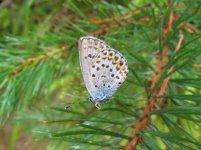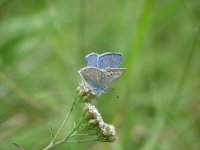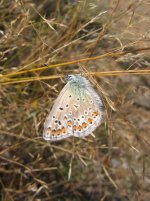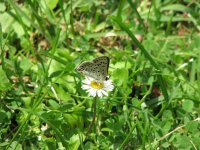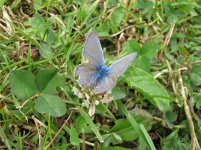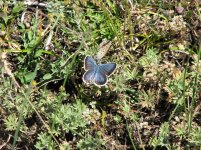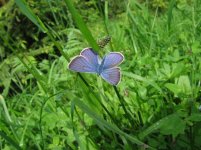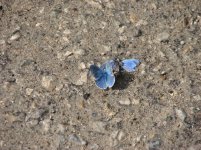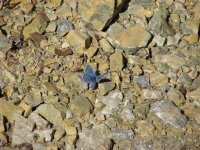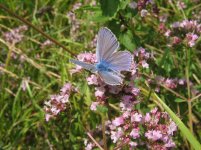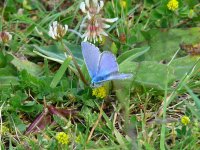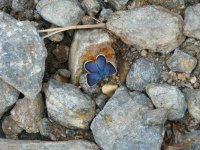balkantrek
Well-known member
Gavia's excellent thread 'ID Tips for Blue Butterflies' is deservedly generating a lot of interest:
http://www.birdforum.net/showthread.php?t=143959
I am sure it will encourage a lot of other forum members to start taking a more careful look at the blue butterflies they see and photograph. It has certainly rekindled my interest in them, and got me going through some of my own photos and trying to identify butterflies that I had simply given up as 'bewildering blues'!
Rather than hijack Gavia's informative thread by posting some of my own as yet unidentified blues there for identification, I thought it might be a good idea to open another thread alongside Gavia's where 'mystery blues' awaiting identification could be posted, and we could help each other try and determine what they are, and just as importantly from an educational point of view, highlight the reasons why they are what they are! |=)|
Furthermore, this will serve as some good 'homework' and study whilst we await Gavia next chapters of the 'ID Guide'!
So here are my first blues for identification and discussion:
Photo 1: Mystery - black marginal spots seem unusually large
Photo 2: Some species of Short-tailed Blue perhaps, damaged to rear of butterfly doesn't help
Photo 3: Maybe a Blue Argus or Brown Argus
http://www.birdforum.net/showthread.php?t=143959
I am sure it will encourage a lot of other forum members to start taking a more careful look at the blue butterflies they see and photograph. It has certainly rekindled my interest in them, and got me going through some of my own photos and trying to identify butterflies that I had simply given up as 'bewildering blues'!
Rather than hijack Gavia's informative thread by posting some of my own as yet unidentified blues there for identification, I thought it might be a good idea to open another thread alongside Gavia's where 'mystery blues' awaiting identification could be posted, and we could help each other try and determine what they are, and just as importantly from an educational point of view, highlight the reasons why they are what they are! |=)|
Furthermore, this will serve as some good 'homework' and study whilst we await Gavia next chapters of the 'ID Guide'!
So here are my first blues for identification and discussion:
Photo 1: Mystery - black marginal spots seem unusually large
Photo 2: Some species of Short-tailed Blue perhaps, damaged to rear of butterfly doesn't help
Photo 3: Maybe a Blue Argus or Brown Argus
Attachments
Last edited:




